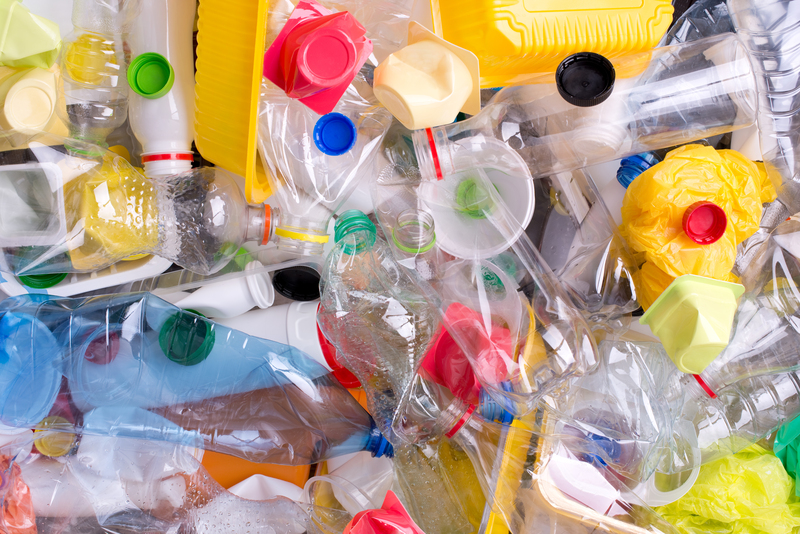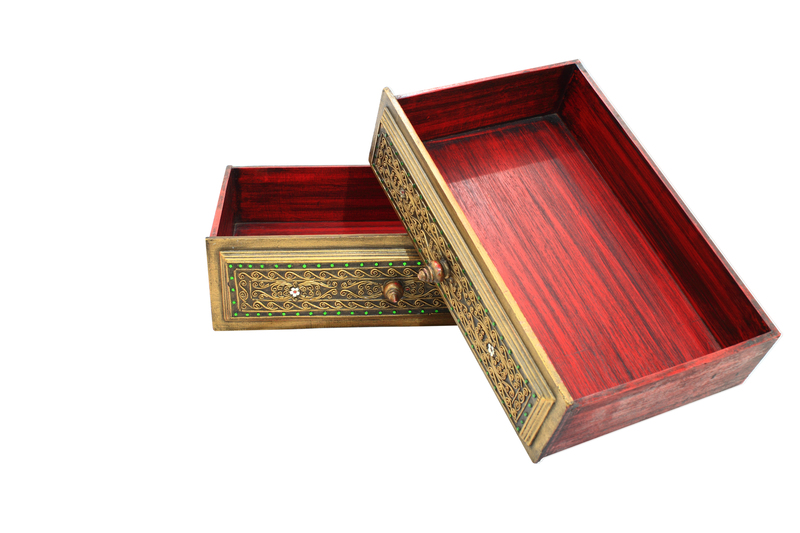The Path to Clarity: Decluttering and Minimalist Living
Are you feeling overwhelmed by the chaos of daily life? Is your home filled with things you rarely use, causing stress or distraction? The journey to a better, more intentional life often starts with a single step: decluttering. Coupled with minimalist living, this path can lead to greater clarity, purpose, and peace of mind.
In this comprehensive guide, we'll explore the essentials of decluttering and minimalist living, practical tips to simplify your home and lifestyle, and inspire you to embrace a more purposeful existence. Whether you're a seasoned minimalist or new to the idea, this article will provide invaluable insights on how to declutter your space and mind, setting you on a rewarding path to clarity.
Why Decluttering and Minimalism Matter
Decluttering is the process of removing unnecessary items from your life, whilst minimalism is a lifestyle that encourages intentional living with less. Both go hand-in-hand to create an environment where you can focus on what truly matters.
Key Benefits of the Minimalist Lifestyle
- Reduces Stress: Fewer possessions mean less to clean, fix, or worry about.
- Boosts Productivity: A tidy workspace can help you focus and accomplish more.
- Saves Money: Mindful consumption reduces impulse purchases.
- Cultivates Mindfulness: Living with less encourages appreciation for what you have.
- Improves Well-being: A clean and organized environment supports mental health.
Decluttering and minimalism are not about deprivation. They are about curating your surroundings, habits, and even thoughts to align with your true values. The minimalist path promotes freedom from excess, allowing clarity, peace, and vitality to flourish.

Understanding the Psychology of Clutter
Clutter affects more than just your physical space--it impacts your mind and emotions. Studies show that visual clutter competes for your attention, making it harder to focus and process information. A crowded environment can trigger anxiety, guilt, or a constant sense of unfinished business.
Minimalist living principles teach us that less is often more. By letting go of non-essentials, you gain the physical and mental space needed to foster creativity, relaxation, and productivity.
Common Myths About Minimalism
- Minimalism requires getting rid of everything. In truth, minimalism is about keeping what is meaningful and necessary to you.
- Minimalist living looks the same for everyone. There's no one-size-fits-all; each person's version is unique.
- Minimalism is expensive. Actually, it encourages thoughtful purchases, often saving you money in the long run.
- Decluttering needs to happen all at once. Slow and steady progress is perfectly acceptable--and often more sustainable!
How to Start Your Decluttering Journey
If you're ready to begin your path to clarity through decluttering and minimalist living, follow these practical steps:
1. Define Your 'Why'
Your motivation fuels perseverance. Do you crave more peace? Is your goal to reduce stress or move into a smaller home? Write down your reasons and keep them visible as a reminder.
2. Start Small
Feeling overwhelmed is common, but small actions yield big results over time. Try tackling just one drawer, shelf, or surface a day. This builds momentum and prevents burnout.
3. Sort and Evaluate
As you go through your possessions, sort them into four categories:
- Keep: Items you use and love.
- Donate: Things in good condition but no longer needed.
- Recycle: Items that can be responsibly processed.
- Discard: Broken, unusable, or expired items.
4. Embrace the One-in, One-out Rule
For every new item you bring in, let go of one. This golden rule of minimalist living helps prevent clutter from returning.
5. Create Functional Spaces
Organize according to how you use your space. For example, keep everyday essentials accessible, and store or donate occasional-use items to free up room. Minimalism is about utility, not just appearance.
6. Let Go of Guilt
It's natural to feel attached to certain things--gifts, souvenirs, or inherited items. However, remember: the love or memory isn't in the object, but in your heart and mind.
Room-by-Room Guide to Decluttering
The Living Room: A Sanctuary for Relaxation
- Clear surfaces of knick-knacks and unnecessary decorations.
- Arrange furniture for openness and flow.
- Choose multi-purpose or space-saving furniture.
- Keep frequently used items within reach; store others out of sight or let them go.
The Kitchen: Streamlined and Efficient
- Sort through utensils, cookware, and gadgets. Keep those used at least weekly.
- Organize the pantry by discarding expired goods.
- Store appliances off countertops to create an uncluttered look.
- Adopt a "mise en place" approach: everything in its place.
The Bedroom: Your Personal Retreat
- Limit decor to pieces that uplift and calm you.
- Keep your bedside table tidy--only essential items allowed.
- Declutter your wardrobe by donating or selling clothes you haven't worn in over a year.
- Prioritize restful colors and fabrics.
The Bathroom: Fresh and Functional
- Discard empty or unused cosmetics and toiletries.
- Keep countertops clear; store daily items in drawers or baskets.
- Use organizers for small items like makeup, razors, and medicines.
The Workspace: Inspiring Productivity
- Limit your desk to essential tools: computer, notebook, pen, and lamp.
- File or scan important documents; recycle the rest.
- Unsubscribe from unnecessary emails and go digital with documents where possible.
Maintaining a Minimalist Home
Once you've decluttered every area, the next step is maintaining order. Here are a few tips to keep clutter at bay and enjoy the ongoing benefits of minimalist living:
- Institutionalize regular reviews: Set a monthly or quarterly schedule to reassess possessions.
- Shop mindfully: Ask yourself if a new purchase aligns with your values and if it genuinely adds value to your life.
- Embrace quality over quantity: Invest in fewer, better things that last.
- Focus on experiences over possessions: Memories and relationships outlast material items.
Minimalism Beyond Possessions
Minimalism isn't confined to our homes and wardrobes. Its principles extend to our time, relationships, and digital lives.
Digital Decluttering
- Unfollow social media accounts that don't inspire or inform.
- Uninstall apps that consume time or space on your devices.
- Organize files and photos digitally, deleting duplicates and unused data.
Time and Commitments
- Say 'no' to obligations that don't serve your priorities.
- Focus on quality time with loved ones and essential pursuits.
- Limit multitasking to reduce mental clutter and enhance effectiveness.
The Emotional Journey of Decluttering
Letting go of possessions can trigger emotions: nostalgia, guilt, fear, even relief. Acknowledge these feelings rather than suppressing them. If you struggle with parting from something, ask yourself:
- Does this object have a clear purpose or bring me joy?
- Am I holding on out of obligation or fear of regret?
Learning to release what no longer serves you is an act of self-care and empowerment.
Minimalist Living Tips for Families
Minimalism with kids or a family presents unique challenges--but also unique rewards. Here's how to instill minimalist habits at home:
- Involve everyone in the decluttering process.
- Focus on shared experiences (family outings, game nights) over gift-giving or acquisitions.
- Teach children to donate toys or clothes they've outgrown.
- Set boundaries for incoming items (birthday toys, gifts, etc.).
Inspiring Minimalist Living Stories
Many people have transformed their lives by embracing minimalist living and decluttering. They report benefits such as more family time, improved health, better finances, and a restored sense of purpose. Their stories serve as reminders that clarity and contentment come not from accumulation, but from intentional living.

Resources for Your Minimalist Journey
- Books: "The Life-Changing Magic of Tidying Up" by Marie Kondo, "Minimalism: Live a Meaningful Life" by Joshua Fields Millburn & Ryan Nicodemus.
- Documentaries: "Minimalism: A Documentary About the Important Things" (Netflix).
- Websites: Becoming Minimalist, The Minimalists, Zen Habits.
- Apps: Clutter-Free, Tody, Unroll.Me, Simple Habit (for mindfulness).
Final Thoughts: Embracing the Path to Clarity
Decluttering and minimalist living are not fleeting trends; they are lifelong journeys toward well-being, authenticity, and fulfillment. Each step you take brings you closer to a life where everything--possessions, commitments, thoughts--supports your core values and well-being.
Remember: Minimalism is not about perfection. It's about making space for what matters most. Whether you're just beginning or looking to deepen your practice, the path to clarity starts with intentional action. Start small, keep going, and savor the newfound freedom and peace.
Begin your journey today toward a more intentional, meaningful life through decluttering and minimalist living.